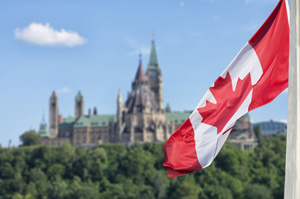Does Quantitative Easing Work as Advertised?

This is the third post in a three-part series on the use of quantitative easing as a monetary policy tool over the past decade.
The two previous posts in this series discussed central banks’ use of quantitative easing (QE) since the financial crisis and how QE is supposed to work in theory. Today’s post will examine the empirical evidence on QE as well as two natural experiments to gain insights on the effectiveness of QE.
Empirical Evidence on QE
In an article in The Regional Economist, Stephen Williamson, a former vice president and economist at the St. Louis Fed, cited a 2016 paper that summarized the empirical work evaluating the effects of QE.1
“The weight of the results was interpreted by those economists as favoring the standard central banking narrative concerning QE. That is, according to the narrative, QE works much as conventional accommodative policy does—it lowers bond yields and increases spending, inflation and aggregate output,” Williamson wrote.
However, he cited a few reasons to be skeptical of this interpretation. In particular, he noted:
- One set of studies only looks at how asset prices react in a short window around a policy announcement.
- The authors of the 2016 paper noted econometric problems in the studies they looked at.
- The empirical work examined didn’t measure the advantage central banks may have in transforming assets when they conducted QE.
Natural Experiments
“Primarily, we are interested in how QE matters for the ultimate goals of central banks—generally pertaining to inflation and real economic activity,” Williamson wrote. To that end, he looked at two natural experiments:
- QE in Japan post-2013
- Canada and the U.S. after the financial crisis
Japan Post-2013
Williamson pointed out that the Bank of Japan implemented a QE program in early 2013 with the goal of achieving its 2 percent inflation target within two years.
Despite a large increase in the monetary base in Japan since 2013, he noted that there has been little or no ultimate effect on inflation. While inflation increased temporarily in 2014 largely due to an increase in Japan’s consumption tax, inflation has averaged roughly zero from mid-2015 to March 2017.
Canada and the U.S.
Williamson noted that Canada and the U.S. are typically subject to the same macroeconomic forces, but the Fed used QE in the wake of the financial crisis, while the Bank of Canada did not.
“So, if QE were effective in stimulating aggregate economic activity, we should see a positive difference in economic performance in the U.S. relative to Canada since the financial crisis,” he explained.
However, he pointed out that there was little difference in real gross domestic product (GDP) performance from 2007 to the fourth quarter of 2016. In fact, Canada had slightly higher cumulative growth over that period.
Conclusion
“Thus, in these two natural experiments, there appears to be no evidence that QE works either to increase inflation, if we look at the Japanese case, or to increase real GDP, if we compare Canada with the U.S.,” he wrote. (For figures that illustrate these findings, see Quantitative Easing: How Well Does This Tool Work?)
He concluded: “With respect to QE, there are good reasons to be skeptical that it works as advertised, and some economists have made a good case that QE is actually detrimental.”
Notes and References
1 Bhattarai, Saroj; and Neely, Christopher. “A Survey of the Empirical Literature on U.S. Unconventional Monetary Policy.” Federal Reserve Bank of St. Louis Working Paper 2016-021A, October 2016.
Follow the Series
- What Is Quantitative Easing, and How Has It Been Used?
- What Economic Theory Says about Quantitative Easing
- Does Quantitative Easing Work as Advertised?
Additional Resources
- Regional Economist: Quantitative Easing: How Well Does This Tool Work?
- On the Economy: What Does Neo-Fisherism Say about Unconventional Monetary Policy?
- On the Economy: How Might Increases in the Fed Funds Rate Impact Other Interest Rates?
Citation
ldquoDoes Quantitative Easing Work as Advertised?,rdquo St. Louis Fed On the Economy, Nov. 30, 2017.
This blog offers commentary, analysis and data from our economists and experts. Views expressed are not necessarily those of the St. Louis Fed or Federal Reserve System.
Email Us
All other blog-related questions

